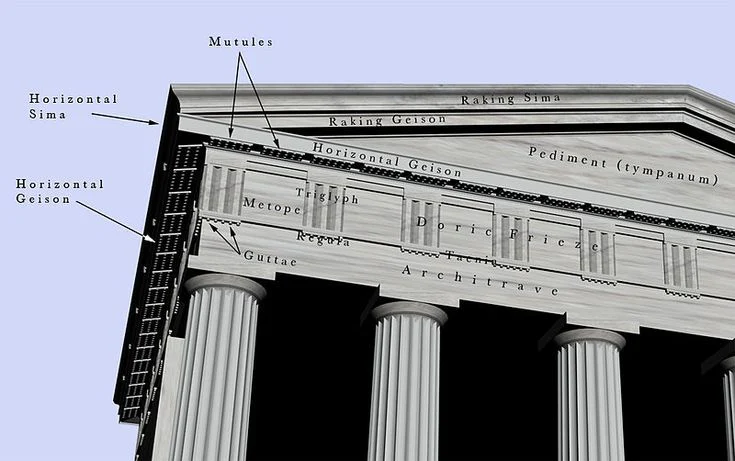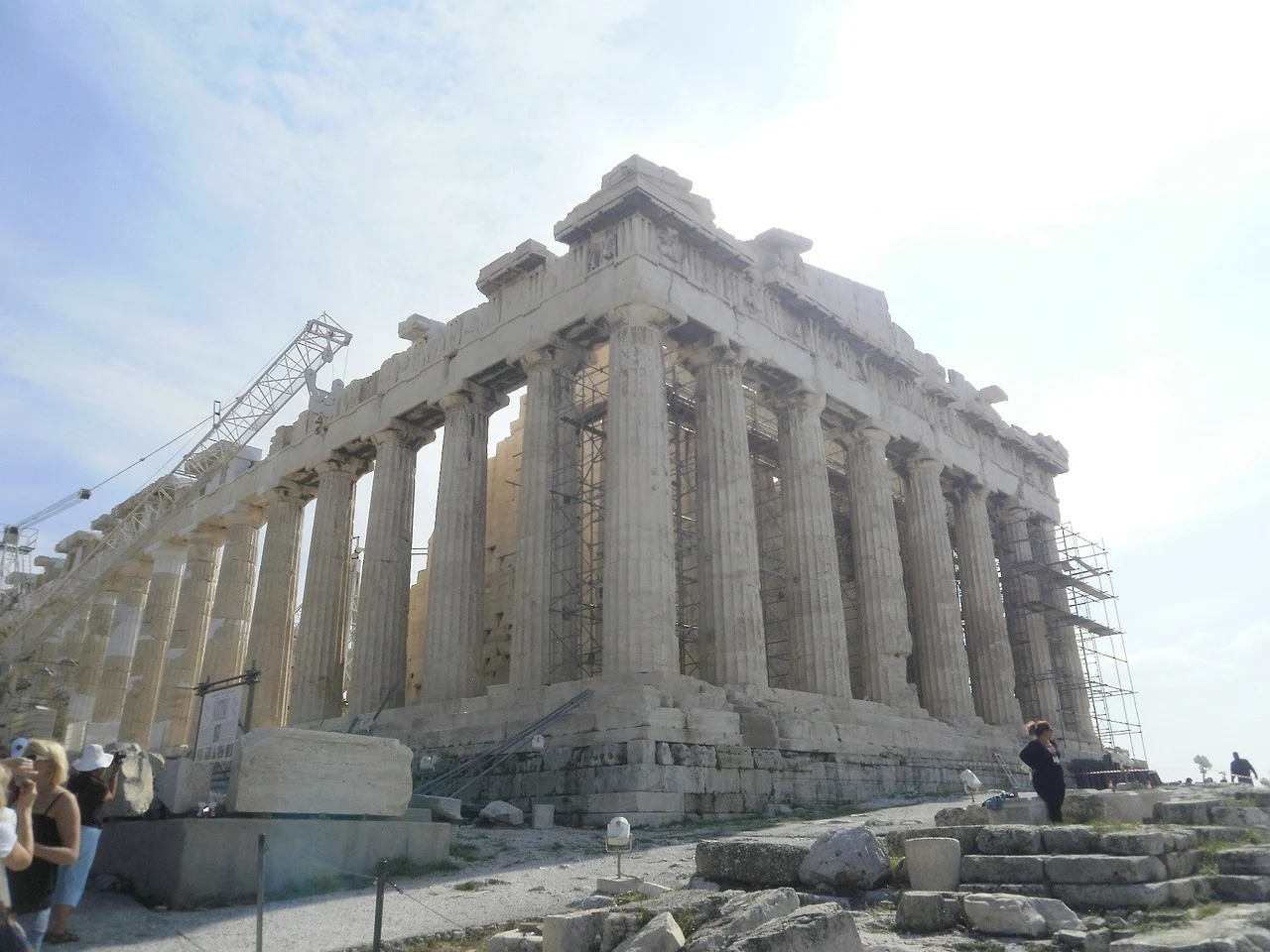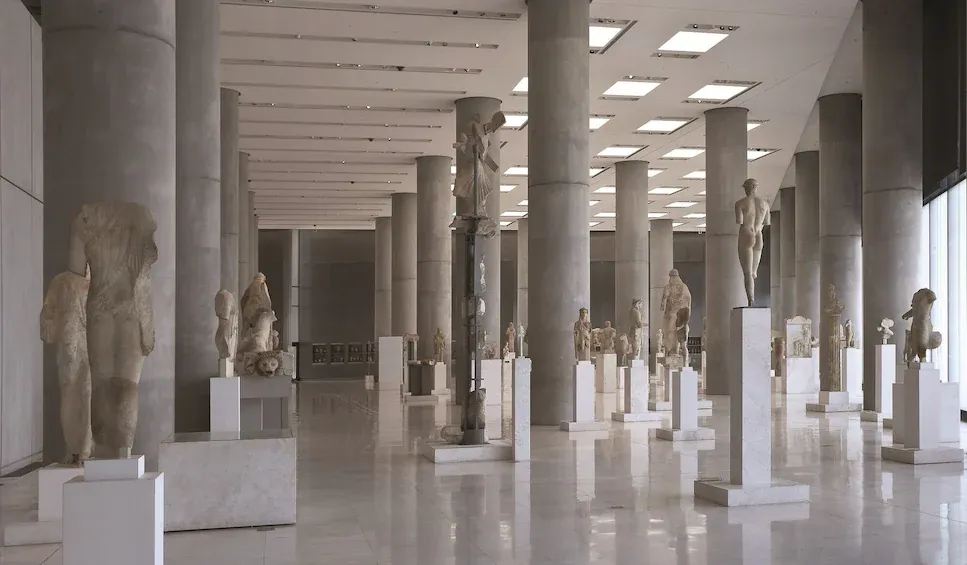Unveiling the Majesty, Beauty, and Solidity of Doric Architecture
Entering the World of Doric Architecture
Welcome, architecture enthusiasts and history lovers! Today, we embark on a captivating journey to explore and dive into the grandeur and beauty of the world of Doric architecture. This iconic style has left its mark on countless structures throughout history, and its majestic beauty continues to captivate us today.
From the renowned Parthenon in Athens to the Temple of Apollo in Corinth — see the section below— Doric architecture is a true testament to the craftsmanship and ingenuity of ancient civilizations. So then, grab your hard hat and get ready to uncover the secrets behind this timeless architectural style! Step back in time with us as we unravel the mysteries and intricacies of this notable architectural style that has withstood the test of time.
Today, in this special blog post, enjoy your fictional journey with us and let it be beneficial for your general knowledge!
 |
| Lincoln Memorial: a Doric architectural monument, Image by: thoughtco.com |
A Glimpse into the Past!
So, let's get started by imagining yourself transported to ancient Greece, where the Doric order first emerged around the 7th century BCE. It was one of the three major architectural orders used in ancient Greek and later Roman architecture. The Doric style originated in mainland Greece, particularly in the region of Doris, hence its name.
The essence of Doric architecture lies in its simplicity and strength. This style became synonymous with the imposing and majestic temples dedicated to the gods of Greek mythology. The Doric order, characterized by its robust columns and minimal ornamentation, exudes a sense of power and solidity.
The Main Element of Doric Architecture is the Column: A Pillar of Strength | The Characteristics
Doric architecture is mainly dominated by its famous Doric column, a powerful architectural element that embodies strength. (See the image above) These columns feature a fluted shaft with no base and are wider at the bottom than at the top, creating an illusion of upward movement. The smooth transition from the column to the capital—a simple circular slab —gives the impression of a column rising effortlessly to support the entablature above.
Overall, Doric style or order, as professionals often prefer to name it, is characterized by its simplicity, strength, and commanding presence. As noted previously, the main architectural features of Doric architecture include the mighty Doric column, which stands tall and sturdy with its fluted shaft and no base.
 |
| Doric columns' capital supporting entablature, Photo from pinterest.com |
On the other part of the construction, the "entablature", consisting of the architrave, frieze, and cornice, rests atop the column. The architrave, the lowest part, is plain and unadorned, showcasing the simplicity that defines the Doric style. The frieze often showcases sculpted triglyphs and metopes that depict mythological stories or historical events.
The architrave is plain and unadorned, while the frieze often features sculpted reliefs depicting mythical tales or historical events. The cornice, with its overhang, provides shade and protection. These architectural characteristics combine to form a style that exudes power, elegance, and timeless beauty.
These sculpted reliefs bring life to the otherwise austere façade, portraying mythical tales or important events of the time. The cornice marks the topmost part of the entablature, featuring an overhang that adds shade and protection. These elements together create a harmonious and imposing aesthetic that has left an indelible mark on architectural history. (Refer to the figure above)
Finally, the cornice marks the topmost part of the entablature, featuring an overhang that provides shade and protection from severe weather, called the "Elements".
Magnificent Examples of Doric Architecture
THE PARTHENON:
Our journey would be incomplete without mentioning the iconic Parthenon, perched on the Acropolis hill in Athens, Greece. Constructed in the 5th century BCE, this temple dedicated to the goddess Athena showcases the epitome of Doric architecture. Its commanding presence, precise proportions, and intricate details make it a marvel of human achievement.
 |
| The iconic Parthenon, perched on the Acropolis Hill in Athens, Image by MAGIKMontreal from Pixabay |
THE TEMPLE OF HEPHAESTUS:
Another testament to the allure of Doric architecture is the Temple of Hephaestus, located on the western side of the ancient Agora of Athens. Built around 450 BCE, this well-preserved temple honors Hephaestus, the Greek god of blacksmiths and craftsmen. Its elegant symmetry and harmonious design make it a must-visit for architecture enthusiasts.
 |
| The Temple of Hephaestus, located on the western side of the ancient Agora of Athens, Image by Lauren van Zoonen from Pixabay |
THE TEMPLE OF APOLLO:
Situated in the ancient Greek city of Corinth, the Temple of Apollo is a splendid example of Doric architecture. Although in ruins today, it still showcases the strength and grandeur that defined this architectural style. With its commanding position atop the Acrocorinth hill, it once stood as a beacon of divine worship and cultural significance.
 |
| Although in ruins today, it still showcases the strength and grandeur that defined this architectural style. Image by st-marco from Pixabay |
Some Contemporary Buildings with Doric Architecture Elements
The Doric architectural style is commonly associated with ancient Greek and Roman civilizations. However, it is less prevalent in modern worldwide architecture. Nevertheless, here are four modern architectural buildings that incorporate elements of the Doric style within their design concept:
1- Bank of America Tower, New York City, USA:
Located in Manhattan, the Bank of America Tower is a modern skyscraper designed by Cook+Fox Architects. While the overall design of the tower is contemporary and uses the high-tech architectural style, it incorporates subtle Doric influences in its base. The building's entrance features fluted columns and simplified Doric capitals, paying homage to the classical style.
2- National Library of Greece, Athens:
Designed by Danish architect Schmidt Hammer Lassen, it is a modern building in Athens. While it primarily follows a contemporary architectural style, its design references the Doric tradition. The library's exterior includes a colonnade with slender Doric columns, reflecting the historical significance of Greek architecture.
 |
| National Library of Greece-Athens design references the Doric style, Photo: Wikipedia, Courtesy. |
3- Museum of the Acropolis, Athens, Greece:
Designed by architect Bernard Tschumi in collaboration with Michael Photiadis, the Museum of the Acropolis houses a collection of ancient Greek artifacts, particularly those from the Acropolis of Athens. The museum's design combines modern architecture with classical influences. The exterior of the building features a colonnade with Doric columns, reminiscent of the temples of ancient Greece.
 |
| The Museum of the Acropolis houses a collection of ancient Greek artifacts. Photo: mediaim.expedia.com |
4-The Stavros Niarchos Foundation Cultural Center (Athens, Greece):
Designed by renowned architect Renzo Piano, this multifunctional complex combines a library, an opera house, and a park in a single structure. The building's design incorporates Doric elements, including a colonnade with sleek, modern interpretations of Doric columns. The center serves as a vibrant cultural venue, hosting various artistic and educational events.
Influence on Other Architectural Styles
The impact of Doric architecture extends far beyond ancient Greece. Over the centuries, its timeless appeal and sense of grandeur have inspired architects worldwide. The Doric order found its way into the architectural landscape of ancient Rome, where it coexisted with other orders, such as the Ionic and Corinthian.
Even in the modern era, the influence of Doric architecture can be seen in various buildings and structures around the globe. From government buildings to museums and educational institutions, the Doric style continues to inspire awe and admiration.
Its influence can be observed in neoclassical architecture, which experienced a resurgence during the 18th and 19th centuries, as well as in contemporary structures that pay homage to the past while embracing modern design principles.
Rediscovering the Beauty of Doric Architecture
In a world often dominated by complex and ornate designs, Doric architecture reminds us of the beauty found in simplicity. Its timeless elegance and unwavering strength capture the imagination and evoke a sense of awe. Whether you encounter a Doric temple in its ancient glory or a modern building inspired by this architectural style, the impact remains the same—an appreciation for the enduring legacy of Doric architecture.
So, the next time you find yourself gazing at a Doric column or standing before a majestic temple, take a moment to absorb its magnificence. Let the power and simplicity of Doric architecture transport you to a bygone era, where the gods reigned, and beauty was carved in stone.
As we conclude our journey through the realms of Doric architecture, we hope you have gained a newfound appreciation for this remarkable style. Its influence on the world of architecture and its ability to captivate the human spirit are truly unparalleled. Let us celebrate and preserve the majesty of Doric architecture for generations to come!
.png)






